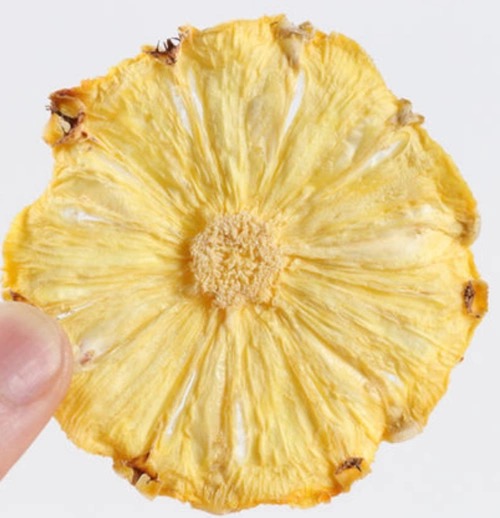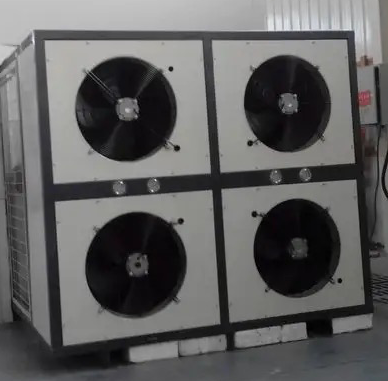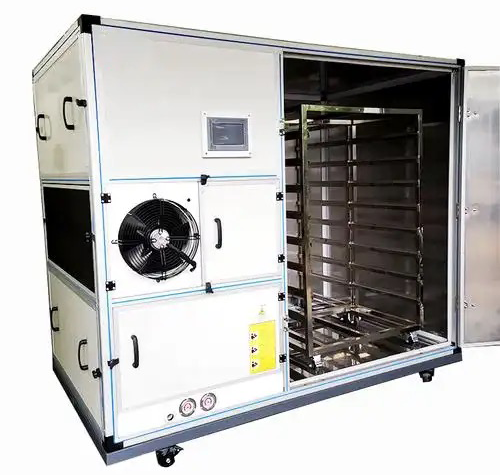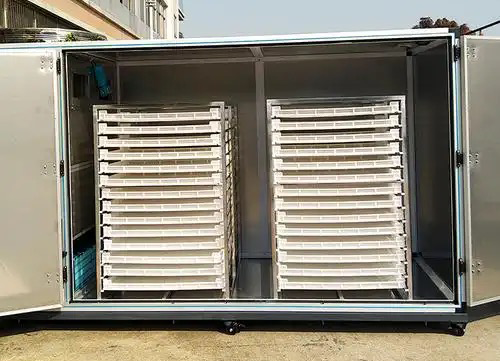
Content Menu
● Introduction to Food Drying Technology
● Understanding Heat Pump Dryers
● How Heat Pump Dryers Work
● Benefits of Using Heat Pump Dryers for Food
>> 1. Energy Efficiency
>> 2. Nutrient Retention
>> 3. Versatility
>> 4. Consistent Quality
>> 5. Reduced Risk of Spoilage
● Factors Influencing the Cost of Heat Pump Dryers
>> 1. Capacity
>> 2. Brand and Quality
>> 3. Features and Technology
>> 4. Installation and Maintenance
>> 5. Market Demand
● Average Cost of Heat Pump Dryers
>> Cost Breakdown
● Choosing the Right Heat Pump Dryer
● The Future of Food Drying Technology
● Sustainability in Food Drying
● Conclusion
● Frequently Asked Questions
>> 1. What types of food can be dried using heat pump dryers?
>> 2. How long does it take to dry food in a heat pump dryer?
>> 3. Are heat pump dryers energy-efficient?
>> 4. What maintenance is required for heat pump dryers?
>> 5. Can heat pump dryers be used in small spaces?
Introduction to Food Drying Technology
Food drying is an ancient preservation method that has evolved significantly over the years. Today, modern food drying machines, particularly heat pump dryers, are at the forefront of this technology. These machines are designed to remove moisture from food products, extending their shelf life while retaining essential nutrients and flavors. In this article, we will explore the various aspects of food drying machines, focusing on heat pump technology, their benefits, and the factors influencing their costs.

Understanding Heat Pump Dryers
Heat pump dryers utilize a closed-loop system to dry food products efficiently. Unlike traditional dryers that expel hot air, heat pump dryers recycle the air within the system. This process not only conserves energy but also allows for precise temperature control, which is crucial for drying sensitive food items.
How Heat Pump Dryers Work
1. Air Circulation: The dryer draws in ambient air, which is then heated by the heat pump.
2. Moisture Removal: The warm air is circulated through the food, absorbing moisture.
3. Condensation: The moisture-laden air is then passed through a condenser, where the moisture is removed and collected.
4. Recycling: The now-dry air is reheated and recirculated, making the process energy-efficient.
Benefits of Using Heat Pump Dryers for Food
1. Energy Efficiency
Heat pump dryers are known for their energy efficiency. They consume significantly less energy compared to traditional drying methods, making them an environmentally friendly option. This efficiency translates into lower operational costs for businesses.
2. Nutrient Retention
One of the primary advantages of using heat pump dryers is their ability to retain the nutritional value of food. The controlled drying process minimizes the degradation of vitamins and minerals, ensuring that the final product is both healthy and flavorful.
3. Versatility
Heat pump dryers can be used for a wide range of food products, including fruits, vegetables, herbs, and meats. This versatility makes them an ideal choice for food manufacturers looking to diversify their product offerings.
4. Consistent Quality
The precise temperature control offered by heat pump dryers ensures that food is dried uniformly. This consistency is crucial for maintaining the quality and taste of the final product.
5. Reduced Risk of Spoilage
By effectively removing moisture, heat pump dryers help prevent the growth of mold and bacteria, reducing the risk of spoilage. This is particularly important for businesses that rely on long shelf life for their products.

Factors Influencing the Cost of Heat Pump Dryers
When considering the purchase of a heat pump dryer, several factors can influence the overall cost:
1. Capacity
The capacity of the dryer is one of the most significant factors affecting its price. Larger dryers that can handle more food at once typically come with a higher price tag. Businesses should assess their production needs to determine the appropriate capacity.
2. Brand and Quality
The brand reputation and the quality of the machine also play a crucial role in pricing. Established brands with a history of reliability and performance may charge more for their products, but they often provide better support and warranty options.
3. Features and Technology
Advanced features such as programmable settings, touch screens, and automated moisture sensors can increase the cost of a heat pump dryer. While these features can enhance usability and efficiency, businesses should weigh the benefits against the additional costs.
4. Installation and Maintenance
The cost of installation and ongoing maintenance should also be considered. Some manufacturers may offer installation services, which can add to the initial investment. Regular maintenance is essential for ensuring the longevity and efficiency of the dryer.
5. Market Demand
Market demand can also influence prices. In times of high demand, prices may increase due to limited availability. Conversely, during slower periods, discounts and promotions may be available.
Average Cost of Heat Pump Dryers
While the cost of heat pump dryers can vary widely based on the factors mentioned above, businesses can expect to pay anywhere from $5,000 to $20,000 for a quality machine. Entry-level models may be available for less, but they may lack the features and efficiency of higher-end models.
Cost Breakdown
1. Entry-Level Models: $5,000 - $10,000
2. Mid-Range Models: $10,000 - $15,000
3. High-End Models: $15,000 - $20,000
Choosing the Right Heat Pump Dryer
When selecting a heat pump dryer, businesses should consider their specific needs and budget. Here are some tips for making the right choice:
1. Assess Production Needs: Determine the volume of food that needs to be dried and choose a dryer with the appropriate capacity.
2. Research Brands: Look for reputable brands with positive reviews and reliable customer support.
3. Evaluate Features: Consider which features are essential for your operation and which ones can be omitted to save costs.
4. Get Quotes: Obtain quotes from multiple suppliers to compare prices and services.
5. Consider Total Cost of Ownership: Factor in installation, maintenance, and energy costs when evaluating the overall investment.
The Future of Food Drying Technology
As technology continues to advance, the food drying industry is likely to see further innovations. Heat pump dryers are becoming increasingly sophisticated, with features such as IoT connectivity, allowing for remote monitoring and control. This can help businesses optimize their drying processes and reduce energy consumption even further.
Sustainability in Food Drying
Sustainability is a growing concern in the food industry, and heat pump dryers contribute positively to this trend. By using less energy and reducing waste, these machines align with the global push towards more sustainable food production practices. Companies that adopt heat pump technology can not only improve their operational efficiency but also enhance their brand image by promoting environmentally friendly practices.
Conclusion
Heat pump dryers represent a significant advancement in food drying technology, offering energy efficiency, versatility, and superior quality. While the initial investment may be higher than traditional drying methods, the long-term benefits and cost savings make them a worthwhile consideration for food manufacturers. By understanding the factors that influence cost and carefully evaluating options, businesses can make informed decisions that enhance their production capabilities.

Frequently Asked Questions
1. What types of food can be dried using heat pump dryers?
Heat pump dryers can be used for a variety of foods, including fruits, vegetables, herbs, meats, and even fish.
2. How long does it take to dry food in a heat pump dryer?
The drying time varies depending on the type of food and its moisture content, but it typically ranges from several hours to a full day.
3. Are heat pump dryers energy-efficient?
Yes, heat pump dryers are known for their energy efficiency, consuming significantly less energy than traditional dryers.
4. What maintenance is required for heat pump dryers?
Regular maintenance includes cleaning filters, checking for blockages, and ensuring that the heat pump system is functioning correctly.
5. Can heat pump dryers be used in small spaces?
Yes, heat pump dryers do not require external venting, making them suitable for installation in small or confined spaces.












